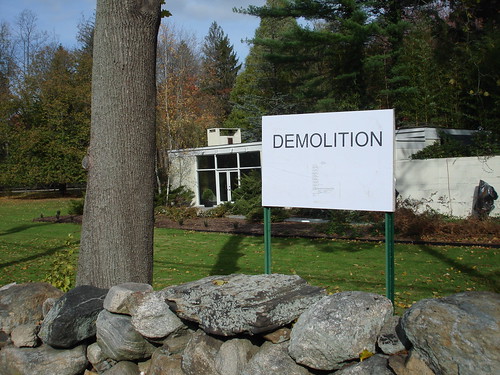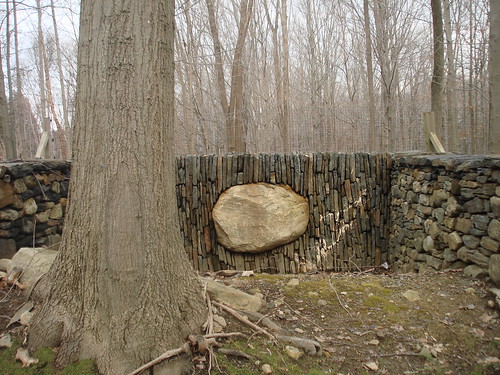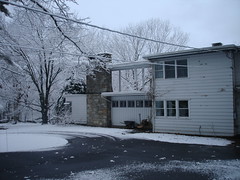I have a historical artifact buried in a drawer somewhere -- a circa 1960 Hopalong Cassidy watch that I got probably when I was first learning to tell time.

What I didn't realize until now is that it has a connection to historical mid-century modern houses. Out in Palm Springs, officials are working on a new law that will list local places of historic significance. One of the potential sites, according to the Desert Sun ...
... the black and white mid-century modern house built by William Boyd, better known as Hopalong Cassidy, at 73-498 Joshua Tree St.I'm going to dig around this weekend and see if I

can find that watch (I know it's
not with my Davy Crockett handkerchief). It alone might be a mid-century modern classic. I wonder what kind of house Roy Rogers and Dale Evans lived in?
Hopalong Cassidy's house might be significant in Palm Springs but it doesn't quite make it to the level of a
UNESCO World Heritage Site. But a lot of Frank Lloyd Wright's buildings might. Here's an excerpt from UNESCO's 2008 tentative list:
Wright (Frank Lloyd) Buildings, Arizona, California, Illinois, New York, Oklahoma, Pennsylvania, and Wisconsin
These ten properties are among the most iconic, most intact, most representative, most innovative and most influential of the more than 400 Frank Lloyd Wright (1867-1959) designs that have been erected. They span almost sixty years of his efforts to create an "organic architecture" that attracted widespread international attention and powerfully affected the course of modern architecture around the world as well as in the United States. The properties include the two Taliesins (his long-time homes with studios and schools); three residences he designed for others, two office complexes, a place of worship, a museum, and a governmental complex. They are:
* Taliesin West (1938), Scottsdale, Arizona
* Hollyhock House (1919-21), Los Angeles, California
* Marin County Civic Center (1960-69), San Rafael, California
* Frederick C. Robie House (1908-10), Chicago, Illinois
* Unity Temple (1905-08), Oak Park, Illinois
* Solomon R. Guggenheim Museum (1956-59), New York, New York
* Price Tower (1953-56), Bartlesville, Oklahoma
* Fallingwater (1936-38), Mill Run, Pennsylvania
* S. C. Johnson and Son, Inc., Administration Building and Research Tower, Racine, Wisconsin (1936-39; 1943-50)
* Taliesin (1911 and later), Spring Green, Wisconsin
And finally there's another news story out today about the prospects for a significant building biting the dust, not in the Palm Springs desert but in New Canaan, Connecticut. I'm referring to Philip Johnson's Alice Ball House, on which a demolition moratorium expires on January 29. Despite the expiration date, the house won't be coming down immediately. From the New Canaan Advertiser:
... Ms. Ross’ application still requires several documents before it can be acted upon.
In a call to the Advertiser Wednesday, Mr. Platz said he had not received notice that utilities had been disconnected; an asbestos manifest; verification that oil tanks have been removed, nor any demolition contractor’s certificate and insurance information.
While Ms. Ross’s submission of these elements are “routine, not insurmountable steps,” Mr. Jarboe said, he added, “It’s not coming down next week.”
 Since shelf space is at a premium (and I'm too cheap!) I'll be asking my library to buy this book: Contemporary PreFab Houses by Erin Cullerton (Author), Michelle Galindo (Designer), published by daab out of Cologne, Germany. I couldn't get the publisher's pages to load quickly enough (5 minutes per page?!?), so here's what MoCo LoCo has to say about it: Due out next month Contemporary Prefab Houses is the first in a series of daab reference books with a compact landscape format that gives a detailed presentation of all projects, showing concepts, photos and texts.
Since shelf space is at a premium (and I'm too cheap!) I'll be asking my library to buy this book: Contemporary PreFab Houses by Erin Cullerton (Author), Michelle Galindo (Designer), published by daab out of Cologne, Germany. I couldn't get the publisher's pages to load quickly enough (5 minutes per page?!?), so here's what MoCo LoCo has to say about it: Due out next month Contemporary Prefab Houses is the first in a series of daab reference books with a compact landscape format that gives a detailed presentation of all projects, showing concepts, photos and texts.










































